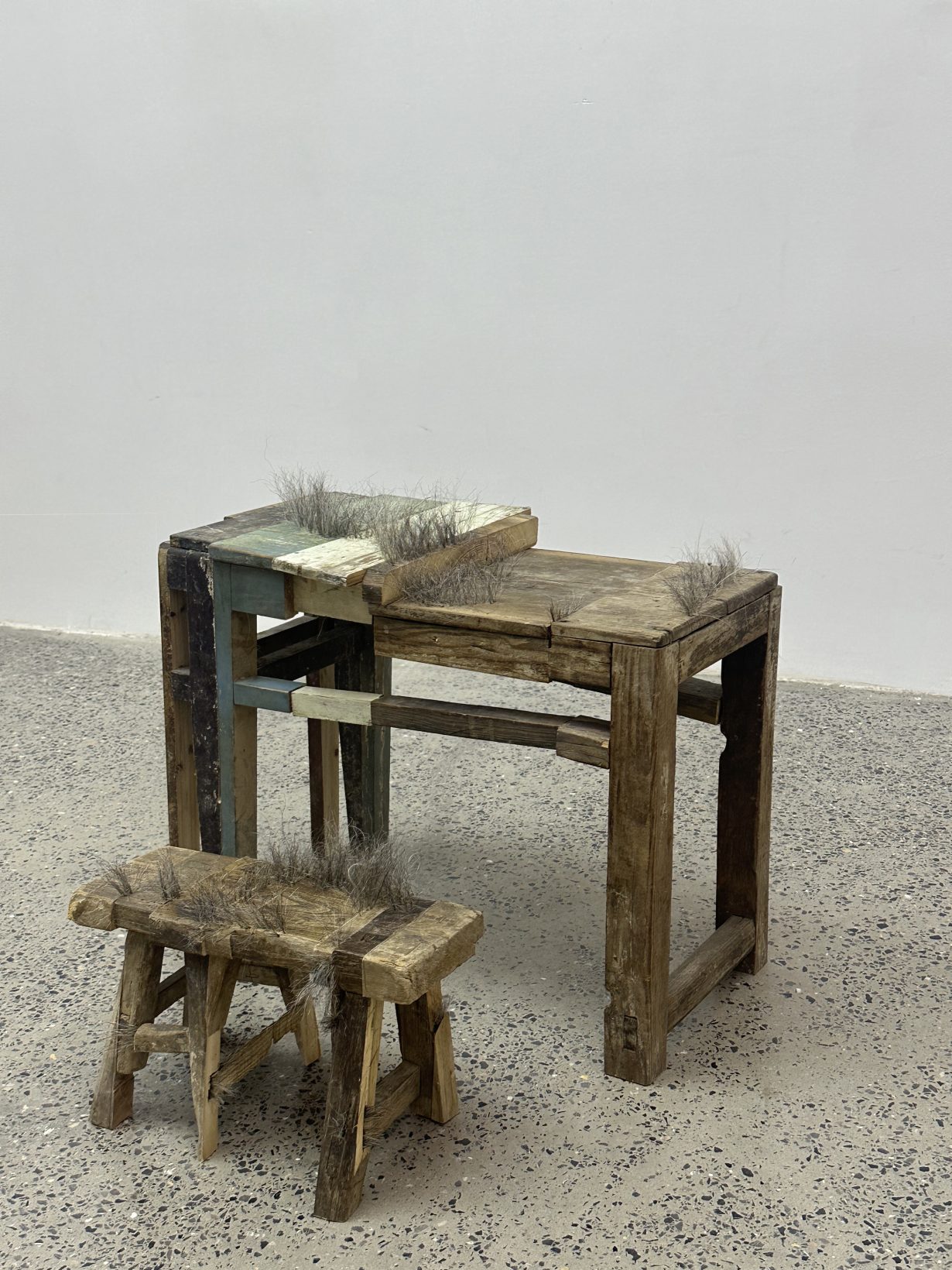
The fouth group of artists to take part in the K11 Group × ArtReview Artist-in-Residence programme, Tingwei Li, Ruofan Chen and Neelambari Phalkey, have completed their residency at the K11 art village in Wuhan.
Born in Yantai, Shandong Provence, Tingwei Li’s work explores what she calls a ‘mental archaeology’ of digital media and its impact on our cognitive processes. Li’s sculpture series at the K11 Residency, titled Hat2Cloud (2024), comprises PLA 3D-printed models inspired by Ottoman gravestones found in Constantinople. Now housed in collections at institutions such as the British Museum, these nineteenth- to early twentieth-century stone slabs are often adorned with decorative, sometimes hatlike finials – which in local traditions were meant to imbue the inanimate place with memories and reflect a cosmological belief in which the deceased finds its way back to nature. Referring to images found in various museum collections, Li first recreated some of the gravestones as clay sculptures and then scanned them into 3D digital models; these were then re-materialised through 3D printing, and the resulting pieces were rearranged in the exhibition space. Rather than replicating the intricate patterns and motifs on the original gravestones, Li is interested in their relevance to our contemporary world and how contemporary art can navigate the dissolution and the erosion of our humanity. ‘In their essence,’ Li says, ‘they explore what it means to translate oneself through multiple realms and engage in a dialogue concerning disintegration and transformation.’ In this sense, through a digital reinterpretation of the original artefact, the work also explores the notion of ‘digital immortality’ and envisions a reality where the deceased can be brought back to life through avatars generated from personal data – a reality in which the boundary between life and death becomes increasingly blurred.

Hubei-born, Shanghai-based artist Ruofan Chen is interested in creating emotional connections with our material reality in a world inundated by screens. At Wuhan, Chen became interested in Wuhan’s culinary culture, especially the customs surrounding breakfast (‘guozao’ in the local dialect) which forms a big part of the day-to-day lives of local communities and constitutes a bustling event on the city’s streets. Chen observed the way people have their meals – usually hastily, sitting on the sidewalk or using benches as makeshift tables – and surveyed local noodle restaurants, from which she gathered old wooden stools and benches from the owners. Her resulting sculpture series Solace in the Bench (2024) is composed of these collected stools that are cut apart, reassembled and adorned with animal bristles. ‘The structure of the old benches, like a vessel of time, contains and displays the mixture of collected individual memories,’ the artist says. The fur covering the sculptures evokes a feeling of comfort that recalls the heat from cooked food and the warmth from people who would have sat on the stools. These sculptures are then scanned into 3D simulations where tangible memories are carried into the virtual space. ‘In an alternative medium,’ Chen says, ‘lifeless things can also thrive and grow.’

Birmingham-based Indian artist and researcher Neelambari Phalkey, is interested in exploring the intersections of art, science and nature. Her project at the residency, the Sponge City series (2024) looks at the role of ‘sponge cities’ – defined as cities that have implemented green infrastructure to capture and retain rainwater – in reducing the risk of flooding and building resilience against climate change. In an immersive installation that uses a range of visual and auditory techniques – including photography, painting and sound – a series of acrylic paintings on canvas hang mid-air from the ceiling. These abstract, boldly coloured compositions recall shapes and networks of flora in nature and evoke an emotional response to the ideas of resilience and hope. Surrounding the paintings is a sound installation, which Phalkey produced in collaboration with multidisciplinary artist Samson Young. The piece features ambisonic recordings from inside of a hydroponic system, capturing what a sponge city might sound like. Sponge City invites the audience to interact with it in multiple ways and ‘aims to raise awareness of the need to build sustainable and resilient cities that can withstand the impacts of climate change and encourages individuals to act towards a more sustainable future,’ Phalkey says.
The one-year artist-in-residence programme in K11 art village hosts emerging artists recruited via an international open call, who are jointly selected by K11 Art Group and ArtReview. The residency offers each artist an integrated studio and living space, and a curated outreach programme encompassing studio visits and seminars.